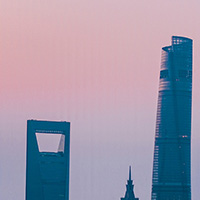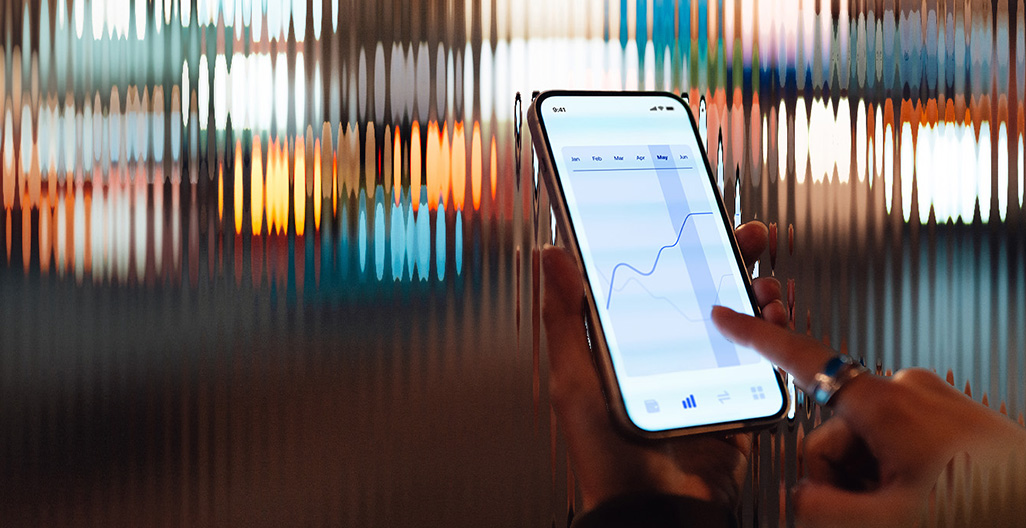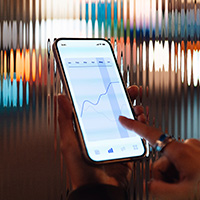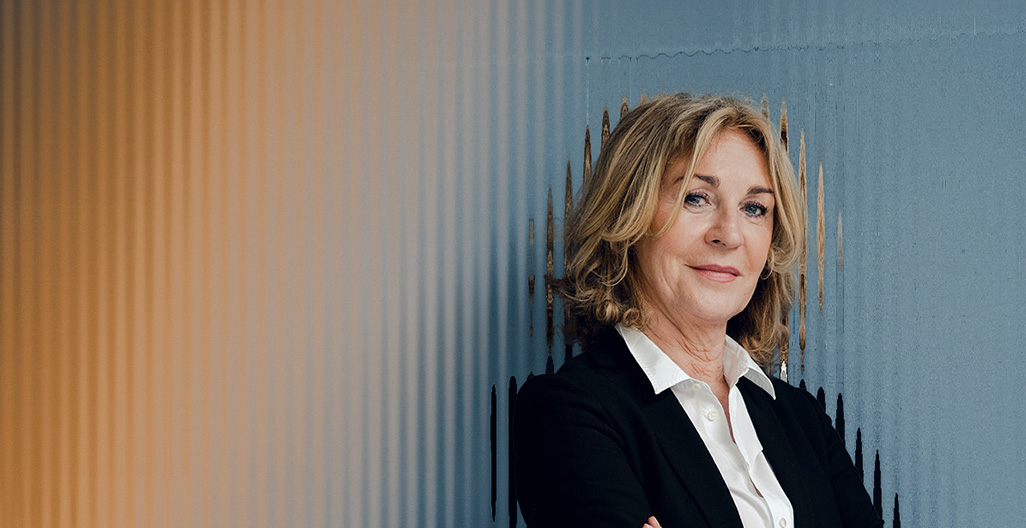
Luca Pronzati
Chief Business Innovation Officer
MSC Cruises

Despite a difficult operating environment for over a year now, MSC Cruises has continued placing digital technologies and innovation at the heart of its guest experience. Last month, the company unveiled its newest innovation at sea, featuring the world’s first humanoid robotic bartender.
We caught up with Luca Pronzati, Chief Business Innovation Officer at MSC Cruises, who gave us some insights into the project, together with his recommendations for stakeholder engagement and combining technology with key business outcomes whilst operating in uncertainty.
Can you describe your remit and responsibility as Chief Business Innovation Officer at MSC Cruises?
I am the Chief Business Innovation Officer of MSC Cruises, reporting to Mr. Gianni Onorato, our Chief Executive Officer. I oversee the overall company’s ongoing “Digital Transformation and Innovation Program,” supporting the company’s long-term vision strategy from MSC Cruises headquarters in Geneva, Switzerland.
I am responsible for outlining the big picture vision to spread the culture of innovation inside the company, to enable the disruption of current business models, to leverage on emerging technologies (such as Digital Channels, Wearables, IoT, Bots, AI & Robotics, AR & VR, etc.) to accelerate the transformation and to keep the company competitive in the market. I am also responsible for business relations with the MSC technological partners’ ecosystem, accounting today for more than eleven of the world's leading digital, tech and behavioral science companies, including Samsung Electronics International, Harman Kardon, Deloitte Digital, and Hewlett Packard Enterprise.
You’ve recently launched the ‘MSC Starship Club’ – can you tell us a little bit about what the project is and how it came about?
MSC Cruises is constantly looking ahead for inspiration, seeking out new ways to employ the latest available technologies to create something unique, to develop new innovations on board to elevate the guest offering to the next level. Our Executive Chairman, Mr. Pierfrancesco Vago, is the visionary leader behind many of the innovations that make MSC Cruises a leader in several areas, including environmental technology, guest experience and ship design. His passion for innovation is embedded into our DNA.
The Corporate Business Innovation team that I lead is constantly looking for the latest available trends and best-in-class technologies, enabling us to elevate the guest experiences and set the new standard of customer excellence at sea. By leveraging on the latest trends in robotics and automation and with the aim to reimagine the traditional bar and entertainment experiences on board, we designed the Starship Club, a futuristic and immersive entertainment lounge concept.
The guest is teleported within the bar onto the first MSC space cruise: the MSC Starliner One. This integrated bar and entertainment experience is enabled by state-of-the-art technologies designed to create a futuristic space atmosphere. The venue features Rob, the first humanoid bartender at sea, who will prepare cocktails made with premium ingredients. The experience includes 3D holograms, an immersive digital art wall, and a 12-seater infinity digital interactive table, giving guests the possibility to explore space with their own personalised galactic tour. Rob will mix, and serve his signature cocktails, alcoholic and non-alcoholic, and countless personalised drinks, just like a human bartender would do, whilst engaging the guests with his voice and human-like expressions for a fully immersive bar experience.
Rob’s skills and emotional responsiveness, combined with bartenders dressed as if they had just stepped out of a sci-fi movie, supported by the immersive surroundings and technology will ensure that the MSC Starship Club is a must-visit attraction for all ages. Guests will use specifically designed self-ordering stations within the area to place their order. Rob will then get to work and use all of his customised robotic skills to prepare the cocktails – pouring spirits, juices and syrups; shaking, building or stirring the concoctions; garnishing.
Not only does Rob prepare an impressive range of cocktails, but he can speak 8 languages (English, Italian, Spanish, French, German, Brazilian Portuguese, Chinese and Japanese), according to the language chosen when the guest makes the order. He also has a clear personality that evolves with the surrounding settings and atmospheres. He uses his LED face to convey emotion so that guests can enjoy his performance whilst they sip on their cocktail.
Can you talk us through the journey of how you executed the project using robotics and digital technologies?
It has taken almost six years to bring Rob and the MSC Starship Club to life. It was a challenging but really exciting journey.
It all began with an inspirational phase, followed by deep research where we looked to find the right company to provide the technology solution. We looked all over the world (including, but not limited to Japan, USA, China and Europe) to research labs and leading innovators, but we realized that there wasn’t a single way to meet all of our specific requirements to carry on this challenging project. We therefore orchestrated a complex ecosystem consisting of over 30 different internal and external stakeholders who have been involved into the project streams.
Such a project must have taken a lot of work with other stakeholders in the business; can you talk a bit about that?
Indeed, there were many stakeholders involved in the project. Our Business Innovation Department has been working closely with other Company teams to design the best experience: Food and Beverage, Entertainment, Information Technology, Marketing and Communication, Legal, just to mention the main ones. We also constantly keep updated on the progress our Executive Chairman and CEO, who have always been curious about any single details of this unique project. Then, as mentioned, an extensive scouting activity has been conducted to find the right partners at all levels.
Designers, shipbuilding teams, multiple suppliers and researchers: over 30 different internal and external stakeholders have been involved in the project.
Just to give you a concrete example, at the early stage of the project, one of our onboard crew bartenders was involved in a unique way. We took his expertise in a special laboratory, fitted him with lots of sensors, then asked him to make lots of different cocktails. The sensors gathered thousands of pieces of data, which were then used when programming Rob to ensure that his shaking, stirring and mixing was done with the same force to expertly create the cocktails, just as if they had been made by a human being bartender.
What were some of the key challenges of bringing this technology to life?
The MSC Starship Club is first of all an holistic experience. So one of the challenges has been to imagine a futuristic world where space cruises are real. How would we want the first bar on board an MSC space cruise to be? What kind of experience would we want the guest to live? Which components might make this experience the most incredible one? After answering all of these questions, we worked to bring this vision to life and design the final experience and created amazing content on each of the digital channels, harmonizing them all together.
Moreover, the digital ecosystem has been connected with the human bar of the venue, where crew bartenders will serve drinks with special effects. Even the menu was carefully designed. The guest will be able to view it from some QR codes placed on the tables and through LED-based bar counter menus.
From a pure technical and infrastructure standpoint, we faced the usual challenges when designing new features to be deployed on board our ships. In particular, we need to plan operations on a cruise ship at open sea, factoring in the movement of the ship. We really had to engineer and develop Rob with extra care.
Considering all the robotic elements and tools, we had to make sure that every piece of the puzzle would fit perfectly one to the others, like a sweet symphony.
We’re living through some challenging times, what key piece of advice can you give to CIOs who are looking to combine cutting edge technology with key business outcomes?
My best piece of advice for senior executives who are planning to leverage on best-in-class technologies to develop new products, services, and solutions would be to start from the Customer Experience. Technology by itself does not mean anything; it is just about how much investment you are ready to undertake. Senior executives should start from the vision and translate it into specific concrete use cases that make a true impact on the Customer Journey.
The key question to be addressed upfront should be: what is the purpose of the innovation I would like to implement? How can it make a real difference for the Customer? Then they should prepare detailed business cases based on robust assumptions that would provide assurance about the expected results in terms of business outcomes. Those outcomes should then be constantly measured via a set of KPIs.
Special thanks to Luca Pronzati and MSC Cruises.
By CIOs, For CIOs®
Join the conversation with peers in your local CIO community.





